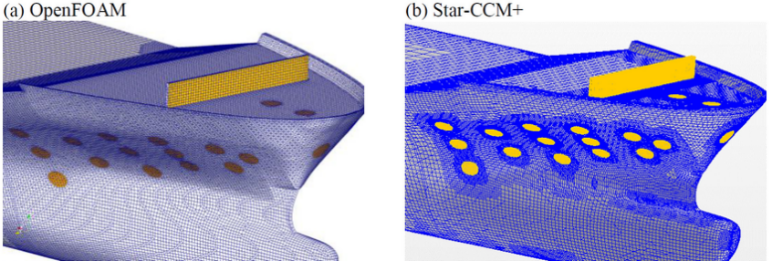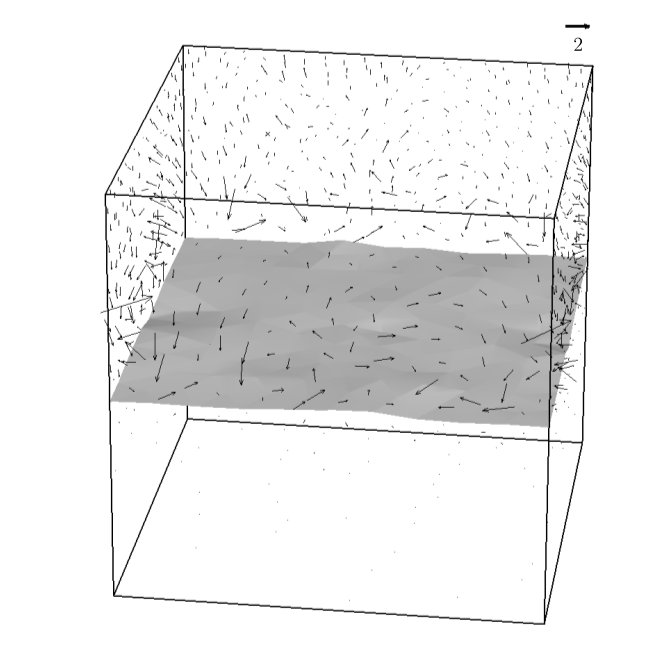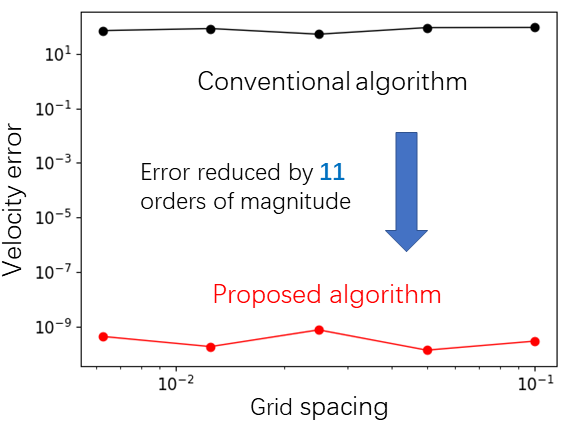A generic balanced-force algorithm is proposed by research group of Bin Xie to solve incompressible multiphase flows with complex interfaces and large density ratios, which significantly suppresses, or even eliminates, the spurious currents problem on the polyhedral unstructured grids. The research findings were recently published in Journal of Computational Physics, a top-rank international journal of computational fluid dynamics (Paper link: https://doi.org/10.1016/j.jcp.2023.112010). The first author of this paper is Yichen Huang, a PHD candidate in the School of Naval Architecture, Ocean and Civil Engineering, and her supervisor Bin Xie, an associate professor, is the corresponding author. This research was supported by National Natural Science Foundation of China (NSFC) and Shanghai Pilot Program for Basic Research.
With the innovative progress in numerical methods and computer performance, the numerical simulations of multiphase flow has become an effective tool to analyze, design and evaluate ships and offshore structures, including semi-submersible platforms, floating wind turbines and other rigid structures. Due to its adaptability for geometrically complex configurations, the unstructured grids have become the first choice for numerical simulations of practical flows involving highly complex geometry (e.g. vessels, buildings and terrains), which are adopted by nearly all of the CFD softwares such as OpenFOAM and Star-CCM+.
However, the conventional algorithm for solving pressure and gravity (and surface tension) force [J. Comput. Phy. 213 (2006) 141-173] does not consider the effect of mesh non-orthogonality, which is prone to generate massive errors caused by numerical discretization on the unstructured grids, resulting in severe spurious currents problem. Taking the static problem as an example, the conventional algorithm produces significant non-physical perturbations when simulating the undisturbed stationary water tank (see Fig. 3(a)), leading to erroneous velocity and deformation of the free surface. The spurious currents problem brings substantial difficulties for the accurate simulation of flow field structure, and considerable disturbance for predicting the motion and load of ships and marine structures.
To address this issue, the authors proposed a novel balanced-force algorithm suitable for arbitrary unstructured grids regardless of the element shape, which significantly suppresses the spurious velocity to nearly machine precision for two-phase flows with large density ratios. The so-called GBF (Generic Balanced-Force) algorithm imposes the balanced-force constraints on the non-orthogonal term of pressure gradient, which arrives at nearly complete equilibrium between the gravity (and surface tension) and pressure gradient on unstructured grids. In the static problem, GBF reduces the numerical error of velocity by 11 orders of magnitude compared to the conventional algorithm. For the problem of solitary wave propagation concerned by tsunami warning, serious numerical oscillations can be observed at the fluid interface computed by the conventional algorithm due to the presence of spurious currents. On the contrary, GBF effectively suppresses the numerical noise as well as waveform distortion, which almost completely eliminates the spurious velocity, and consequently realizes the accurate numerical simulation of solitary wave.
Fig. 3 Computed interface superimposed with velocity vectors and comparison of velocity error for stationary water tank
Fig. 4 Experiment and numerical results of solitary wave propagation
The new algorithm has been successfully applied to the numerical simulation of complex multiphase flow such as the pile breakwater project and dambreak flow experiments. The proposed method offers a promising platform to provide high-fidelity and robust predictions for practical multiphase flow simulations involving large density ratio (up to ) and highly complex geometry. Its simplicity and portability will prompt it to become one of attractive choices for practical applications in science and engineering.
Fig. 5 Actual photography and numerical results of pile breakwater project
Fig. 6 Experiment and numerical results of dambreak flows
Editor on Duty:Zhaoying Wu
Responsible Editor:Qianqian Jiang, Yuhe Fu













